Table of contents
Why take Diuretic Tea?
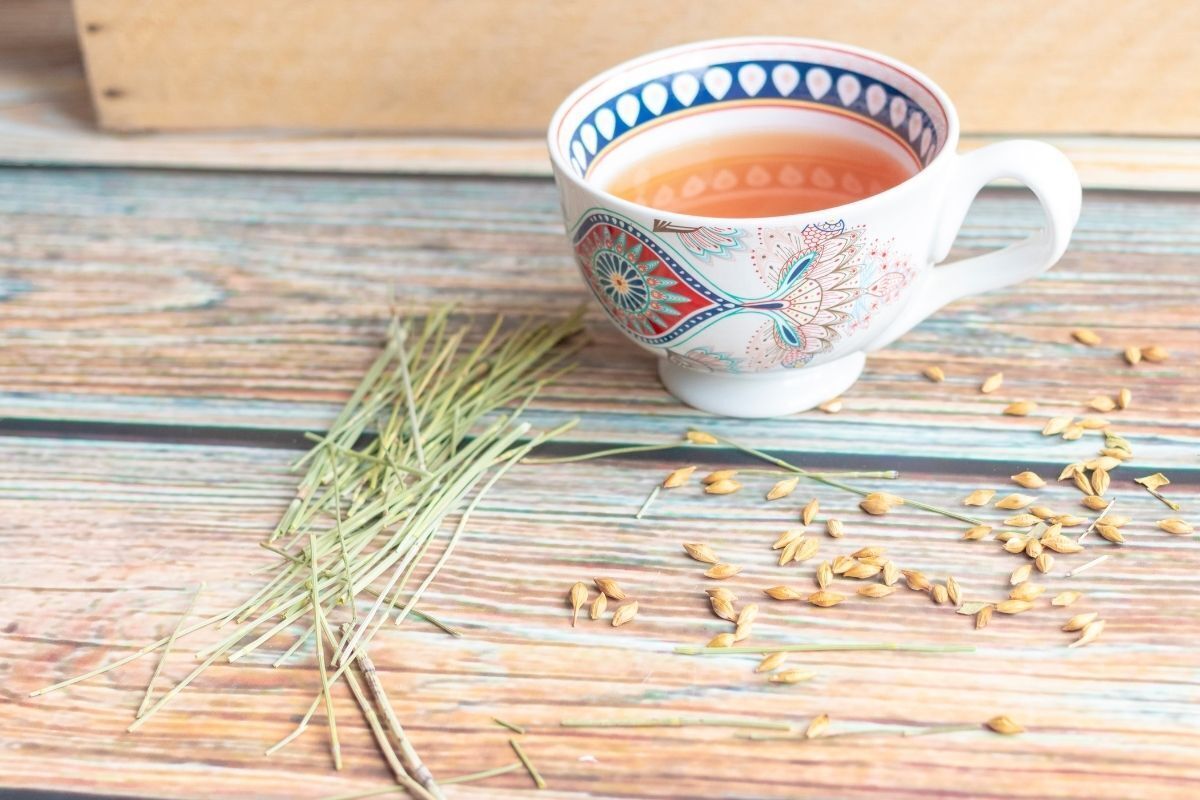
The infusions known as teas can be prepared for consumption from herbs, spices, leaves, roots or fruits. According to the elements used for the preparation, the drink may contain diuretic properties that may contribute to the health of the body and bring benefits to the body by improving its functions.
The term "diuretic" is used to interpret any substance that helps the kidneys and liver function, contributing to the filtering and absorption of water and mineral salts consumed and expelled by the body. For this reason, ingesting diuretic teas helps reduce the accumulation of sodium, one of the main offenders of fluid retention, especially to the publicfemale.
The consumption of diuretic infusions is also commonly recommended by experts and nutritionists in diets for weight reduction, since they help to detoxify the body and deflate the body, besides promoting more willingness. Weight loss should always be linked to physical activities, so the mood and energy offered by infusions is also beneficial.
As for the diuretic action, it is a process that leads the toxins filtered by the kidneys to the path of expulsion through urine. Meet some recipes of diuretic teas that we have separated for you and, more about the influence of the elements of these in the activities of your body, below!
Diuretic Tea with parsley
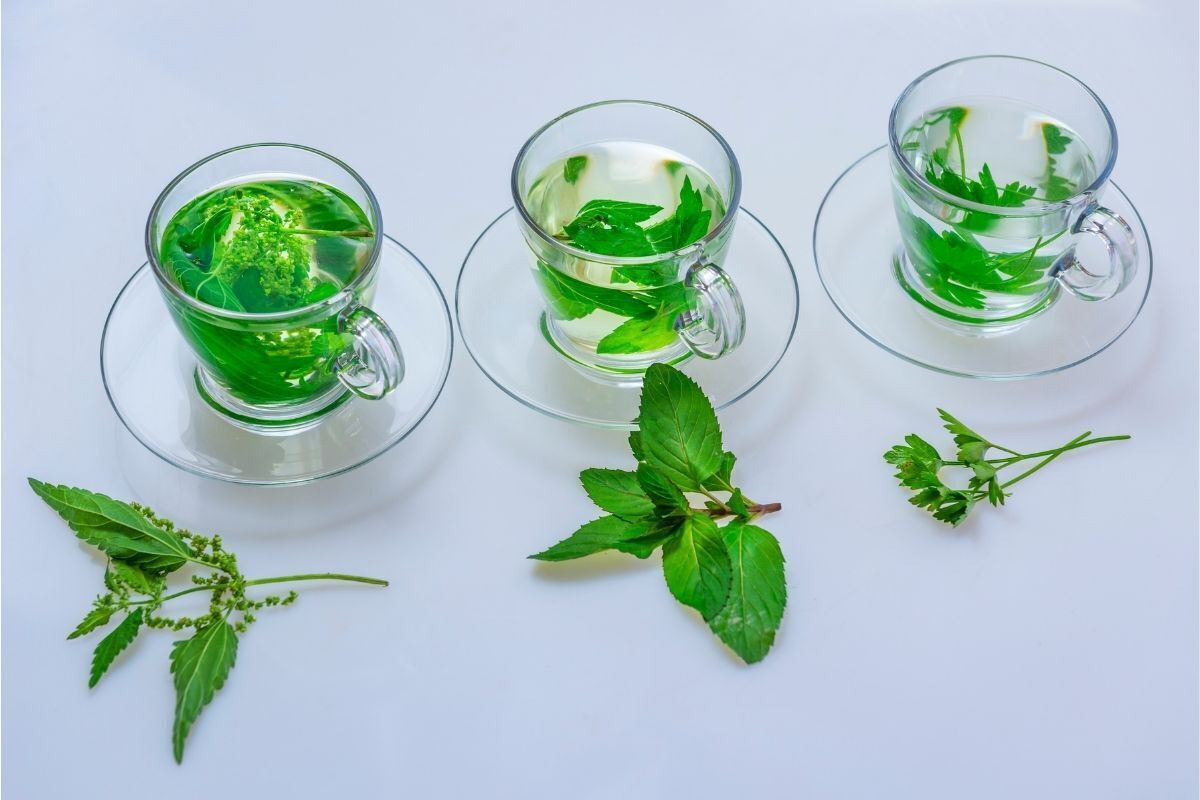
Many people do not know, but parsley is a plant used also for medicinal purposes, besides its application in cooking as a seasoning, which is best known. With a remarkable flavor, its medicinal use is, among others, recommended for the needs to relieve digestion and ensure the accumulation of lower rates of uric acid in the body.
Even those who do not like the aroma of the plant, can use the tea version to enhance the functions of the body. Read on and learn more about the indications, properties, contraindications and have access to a recipe suggestion for a delicious tea with the presence of parsley. Check it out!
Properties
First of all, it is worth remembering that parsley is also known as parsley, cheiro-verde, or even, as perrexil in some regions and states of Brazil. It is very popular and can be easily found in open markets or even, cultivated in small gardens and beds at home, from seedlings easily extracted from their main branches.
It is a plant with great diuretic properties, as it stimulates the production of urine contributing from this action to the process of eliminating fluids from the body, conductors of toxins.
Indications
The use of infusions that contain the parsley as the main element is indicated to promote the reduction of fluid accumulation, especially in the region of the legs. If you are feeling heavy and tired in the legs, make use of this preparation and take the opportunity to relax, putting the legs in a higher mode than the rest of the body. Enjoy and rest them.
In addition to tea, parsley can be used in juices to improve skin health. Because of its antioxidant properties, when added to green juice, which contains other plants and herbs of equal value, parsley is indicated to enhance the properties of other elements. Insert it also in these recipes.
Contraindications
The parsley plant should be avoided, in any form or application, by people who have severe kidney problems or have already undergone specific pictures of diseases with the kidneys (such as nephritis, kidney cysts, etc.). Parsley tea, on the other hand, specifically should be avoided only by women who are in a state of pregnancy or applying breastfeeding.
Ingredients
To make a delicious parsley tea, you need to separate the following ingredients: 1 branch of parsley, preferably fresh and that still contains the stems (for reference: 25 grams of the plant); 1 measure (cup) of water and half a cup of juice from 1 lemon. Tip: try not to cut the plant with a knife, if possible break it with your hands, this action helps maintain all the propertiesintact.
How to do
Clean the parsley, washing it with plenty of water. Add the chopped parsley in a pot with water and bring to a boil. Once it starts to bubble, turn off the heat and cover the container. Let the infusion act for about 5 to 10 minutes. At the end, strain to remove the plant, add lemon and drink still warm.
Diuretic tea with fennel and parsley for pregnant women
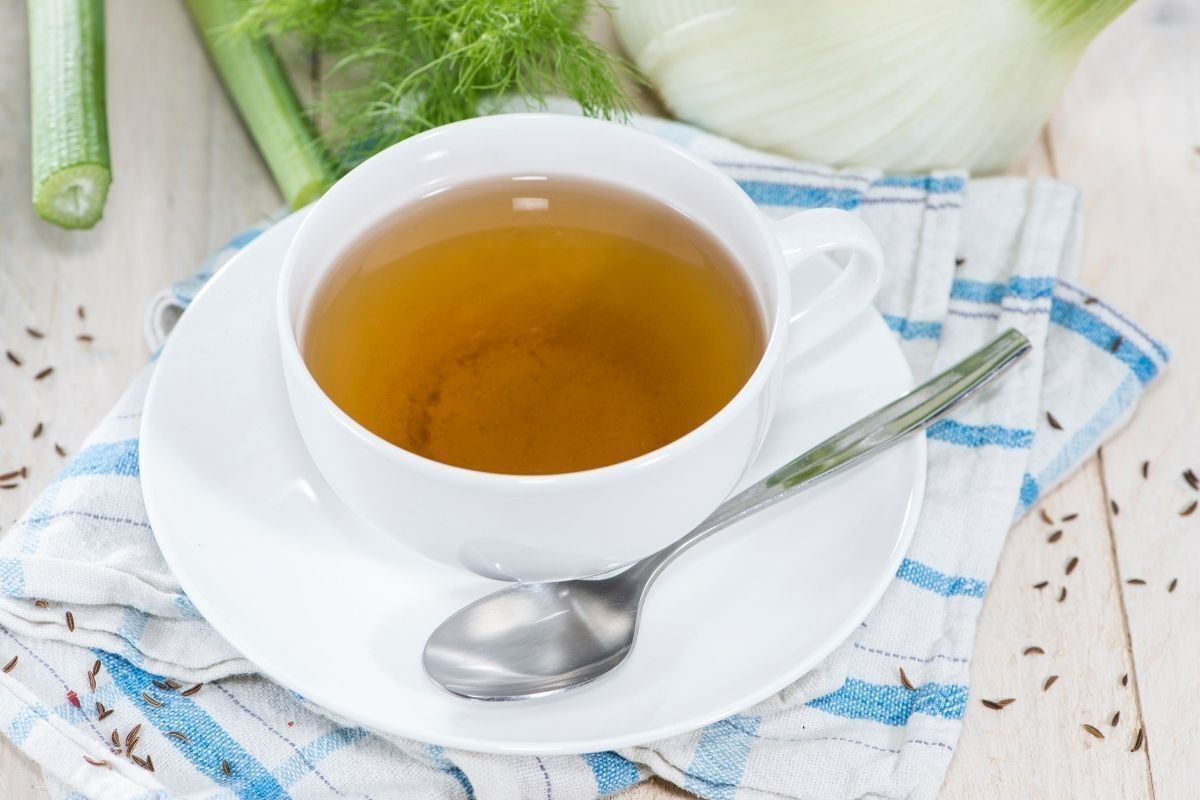
For pregnant women, only the teas that contribute to keep the nervous system calm and quiet are recommended. Although parsley tea is not one of them, if combined with the action of sweet grass, they bring excellent diuretic properties for pregnant women and help improve circulation.
Besides being tasty, this tea brings comfort to the body and can be consumed before the afternoon break or at night, before bedtime. Read on and get to know a suggestion of the sweet herb tea with a small amount of parsley for pregnant women, besides its properties, indications and contraindications. Check it out!
Properties
The sweet grass, in addition to the soothing effect, has good properties that are able to assist in improving poor digestion scenarios and or abdominal discomfort, such as menstrual cramps and bloating sensation in the abdominal region after consumption of some food that was not well digested.
This happens because the herb has a high concentration of potassium as a nutrient and of vitamins A and C. When the sweet herb is combined with parsley, there is a potentiation of its properties making it present diuretic actions in addition to analgesic and anti-inflammatory.
Indications
The fennel tea combined with parsley has diuretic indication and can be used for the control of fluid accumulation for pregnant women, but can also be used by non-pregnant women in order to ease the symptoms of menstrual cramps.
If you are already in the menstrual cycle, when using this infusion, the woman will feel more relief in the abdominal region and circulation, especially the blood flow in the legs.
In women who are not yet in the gestational process, the fennel combined with parsley is indicated to help ease the cramps of the menstrual period. As they have analgesic and anti-inflammatory characteristics, these plants are able to control muscle tension and regulate abdominal pain.
Contraindications
Parsley is contraindicated in large quantities for pregnant women. The fennel, according to some studies, is linked to fertility and, therefore, is not recommended by some experts for women who are in treatment for breast cancer. In any case, if you have doubts whether you can consume, always seek medical evaluation and expert advice.
Ingredients
To make the fennel tea and use the parsley, you will need the following ingredients: 1 measure (tablespoon) of fennel; 1 measure (teaspoon) of parsley and approximately 250 ml of hot water. Note that it will not be necessary to season with sugar, honey or similar, because the fennel has a sweet aroma helping to control the taste.
How to do
The fennel tea with the addition of parsley is made from the infusion without boiling the two plants. Therefore, you will need the water to be very hot. Put, in a cup the measure of fennel and also the parsley. Insert the boiling water and cover the cup in sequence. Wait a few minutes and consume the drink warm.
Diuretic tea with dandelion
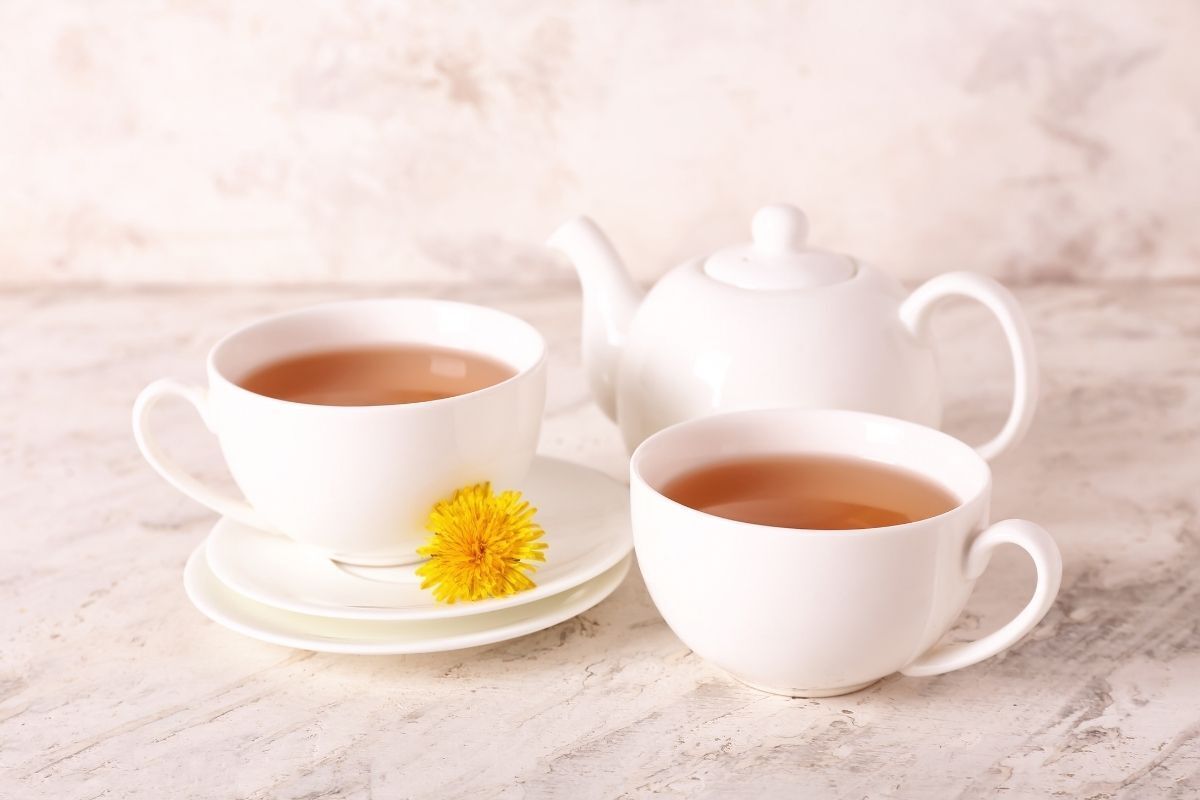
Because it is a nutritious plant, the dandelion, when used in tea format, has diuretic actions and helps to deflate the body.
In addition to its diuretic benefits, dandelion is used to contribute to treatments and relief from ailments such as rheumatism or gout, since it has anti-inflammatory properties, something that helps to deflate legs, feet, arms and hands, benefiting the joints.
Contrary to popular belief, it is not the beautiful yellow flowers that are used for infusion, but the root of the plant. It is the root that carries large amounts of antioxidant and medicinal compounds. Read on to learn more about the indications, properties, contraindications and how to make a recipe for an aromatic dandelion tea.
Properties
In addition to promoting diuretic action, the infusion of dandelion has anti-inflammatory and antioxidant properties, that is, it contributes to the health of the skin and hair. Its composition also aids in the digestion of proteins of animal origin, so it can also be used after meals, in the afternoon, improving digestion.
It also contains vitamin C, vitamin B6 and minerals. Therefore, it is suggested by nutritionists and diet experts to aid in weight loss and elimination of fat from the body. While detoxifying and promoting the elimination of toxins, it is able to bring nutrients that contribute to the health of the body.
Indications
This infusion is fully indicated for adults and children. It will be responsible for increasing the generation of urine in the body. The increased production of urine will help in the elimination of fluids, if the person has a tendency to fluid retention. Thus, the kidneys will also benefit, because the presence of minerals such as potassium and phosphorus will help in filtering and production ofurine.
In its diverse application, it is also indicated to treat problems of the digestive system, lack of appetite in children, biliary disorders, hemorrhoids and decrease the presence of bad cholesterol in the body. The root of the plant also has a mild laxative effect. Diseases such as rheumatism and liver diseases can also be alleviated with the consumption of dandelion.
Contraindications
Only the root of the dandelion plant is contraindicated in some situations. People who have kidney-related diseases (such as nephritis, kidney stones, among others) should avoid the infusion. Severe stomach problems (such as gastritis and ulcers) should also be observed, if you have these problems, avoid consumption. For pregnant women, this infusion is also not recommended.
Ingredients
Have the following ingredients on hand to make dandelion tea: 15 grams of dandelion leaves and root. Note that the flowers are not included. Also set aside 250 ml of very hot water. Ideally, the leaves and root of the plant should be fresh, so leave it to pick or buy when you actually make the infusion.
How to do
To make the infusion, add hot water in a container with a lid. Put the leaves and roots to rest in the water and close tightly. Leave it like this for 10 minutes. Then, strain it and drink it. Note that the consumption of this tea should be practiced only 2 to 3 times a day.
Diuretic Tea with corn hair
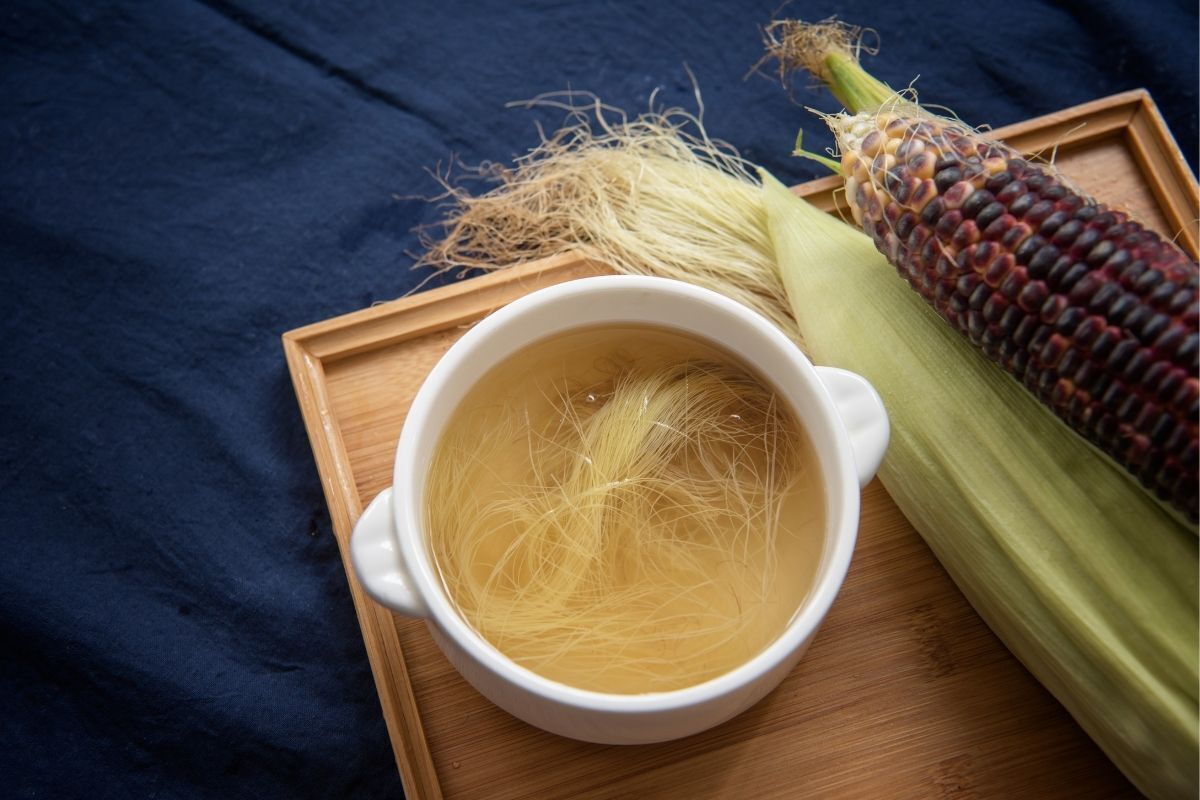
An integral part of corn cobs, corn hair may not look it, but it is a plant. In addition to contributing to the fertilization and conception of the cob, corn hair is also used for medicinal purposes. Consumption of infusions based on this plant is commonly used to relieve swelling and aid in the elimination of retained fluids.
In the composition of corn hair are present substances (proteins, nutrients and carbohydrates) that help improve the body. It is a completely natural product that has diuretic effect. It can be consumed in its natural and fresh form or as dry extract. Understand more about this plant and make a tasty tea containing corn hair.
Properties
Vitamins, proteins, potassium, magnesium, sodium and also carbohydrates are present in the corn hair plant. All these assets are considered great conductors of energy to combat the wear and tear of the body cells. As for the diuretic part, the plant helps in the loosening of the bladder wall, contributing to eliminate the liquids present.
Indications
The infusion of corn hair is very indicated by doctors and specialists in the need for treatment for pathologies related to the kidneys and, as a consequence, the treatment of high blood pressure. It is used as a complement to the control activities of these diseases with the main purpose of deflating and improving the pathways of liquid elimination.
For women, it is also an excellent tea to be used during the menstrual period to decrease tensions. Its intake can be employed to help relieve cramps, possible headaches, discomforts of pains throughout the body, anxiety and stress potentiated during this period.
With its alkaline properties, corn hair also helps to decrease the acid levels of the body with the whole and this balances the anti-inflammatory reactions helping to fight muscle aches and specific joint pains.
Contraindications
Although it does not present serious contraindications, the consumption of the infusion should be performed with caution by people undergoing prostate treatment, since the plant has diuretic properties and, with increased urine production, can cause complications such as pain and discomfort when urinating. For pregnant women, consumption is not recommended.
Ingredients
To make the tea, collect fresh corn hair from one or two ears of corn (2 spoons). You can also use the dried extract, in this version, also use two spoons. Separate two cups of water at room temperature. Unlike other infusions, this will be directly boiled already with the plant submerged.
How to do
Choose to perform the preparation of corn hair tea exactly close to the time you will consume the drink. Because it has a marked aroma, this will help allow a more aromatic consumption. Put all the ingredients together in a pot and let it boil. Turn off the heat and let it rest briefly, strain and consume still warm.
Diuretic tea with horsetail
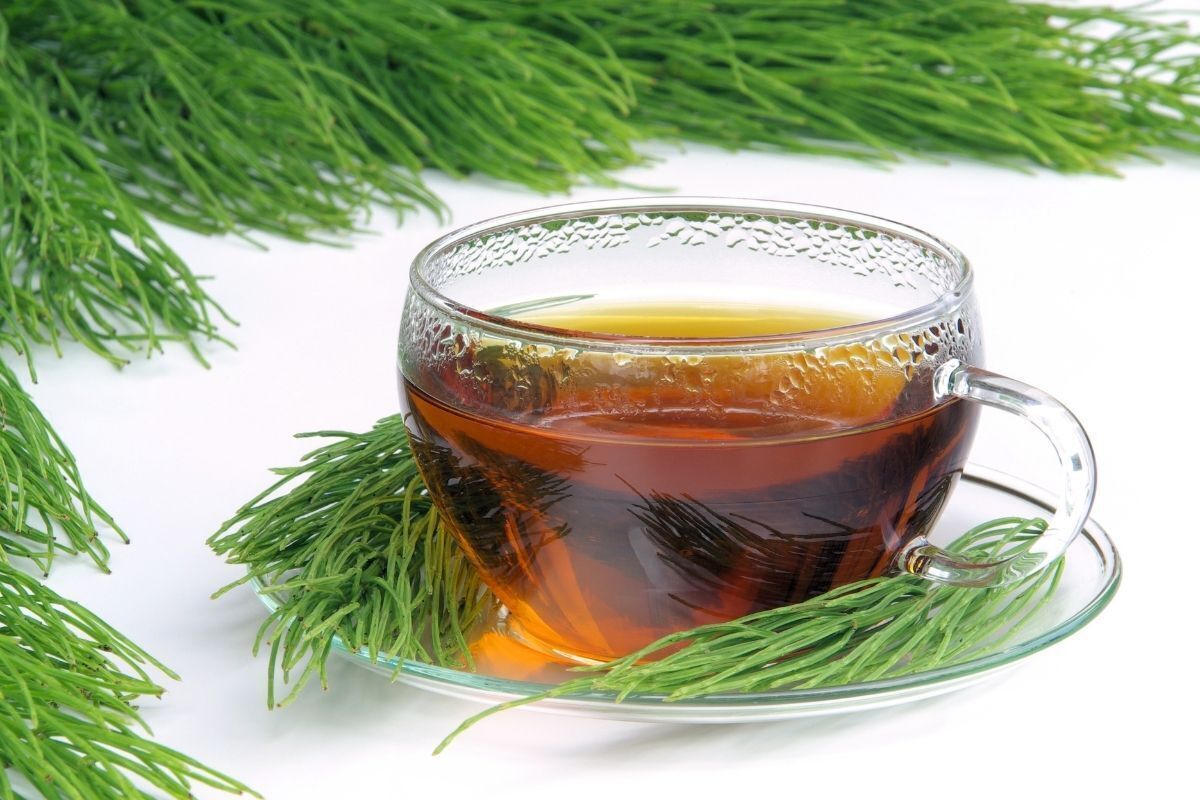
Horsetail is recognized as a diuretic herb, and widely used in various weight loss diets because it helps the body eliminate toxins and improves the conditions for eliminating retained fluids. All the excess water in the body can be worked out, essentially purified and expelled with the use of horsetail-based infusions.
Its direct action in filtering minerals that are essential for the functioning of the body, make the herb is one of the best indicated for action as a diuretic. Some experts even name the herb able to perform a drainage of lymph naturally. Read on and learn the indications and contraindications for the consumption of horsetail tea. Check it out!
Properties
Among all its properties, the ones that stand out the most are the anti-inflammatory and antioxidant action, contributing, mainly and directly, to the elimination of toxins and health of the youth of the cells. In addition, it helps to conduct the elimination of sodium from the body and the expulsion of bacteria.
Indications
This tea is highly recommended for people who have discomfort or swelling in the abdomen region, either by consuming impacting foods or because of overeating. It should also be consumed by those with problems in the urinary system, since it helps in the elimination and purification of liquids.
The use of horsetail also helps maintain the disposition of the bones of the body. This happens due to the presence of minerals (such as calcium and phosphorus) that contribute to the strengthening and increased strength of the body. In external mode, it is indicated to improve the appearance of nails, making them stronger and skin, delivering healthy look.
Contraindications
Prolonged consumption of infusions that contain horsetail is not advised, because as it promotes the elimination of toxins, and this includes minerals that were not absorbed by the body, it can cause the removal of these also in excess. The rule is to maintain parsimony in consumption and not make a habit. It should be interspersed with other infusions of equal nutritional value.
It is indicated for all people who use the tea to be aware of water consumption, including increasing, since horsetail has a high concentration of potassium (which can be a risk for people with heart problems).
Ingredients
It is a simple and quick tea to be prepared. It has a marked taste more bitter, but totally consumable without added sugars. Its ingredients are just a good measure of horsetail herb (1 teaspoon) and half a liter of boiling water. You can use the dried herb that is easily found in stores specializing in medicinal herbs.
How to do
Place the portion of horsetail in a cup. Add the hot water over the herb and cover the cup with a saucer. It is necessary to let it rest for 10 minutes. The tea is prepared through the process of immersion of the plant. After this period, strain it to remove the residues of horsetail and consume. It can be made in larger quantities and stored for cold or iced consumption.
Diuretic tea with ginger
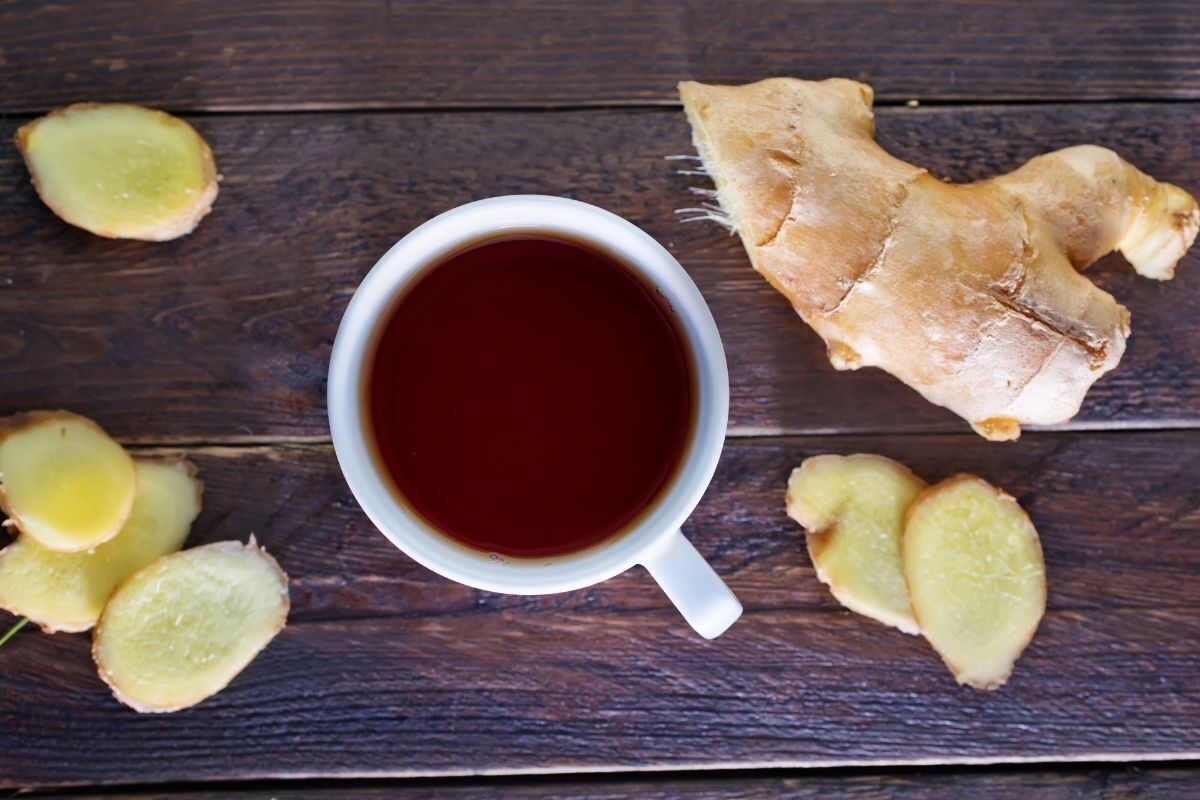
The ginger root is used in many infusions and also combined with various other ingredients to enhance its flavor and aroma in beverages and exquisite dishes.
Many do not know, but ginger is a facilitator of the diuretic functions of the body by being thermogenic. It is also competent used to perform the clearance of the airways, throat irritations and even, in the decrease of chills linked to low immunity.
The ginger has a remarkable taste, sometimes spicy in the mouth. Widely used in oriental infusions by the Japanese and Chinese, the aroma of ginger is unmistakable when present in infusions, even if these are accompanied by other elements. Want to know more about the benefits of ginger tea? Check below!
Properties
Ginger tea is an infusion that carries antioxidant and antibacterial properties, in addition to being thermogenic. This feature assists in activating the metabolism making it produce more energy and, as a consequence, eliminate more toxins. It also contributes to the removal of uric acid from the body, which helps normalize the activities of the intestine.
Indications
For the protection of liver health, the tea prepared with ginger is indicated for its anti-inflammatory and antioxidant actions.
It can be ingested to help eliminate molecules known as free radicals, which act as toxins in the liver and must be removed in order to ensure proper functioning. In addition, it is indicated for treatments related to airway diseases (flu, cold, sore throat).
Because it contains active compounds, ginger is able to promote relaxation of all the muscles of the intestine and decrease the acidity rates of the stomach. Therefore, this infusion is able to assist in the prevention of heartburn and gas generated by the intestine.
Contraindications
For people who have a history of diseases related to the intestine and gastric system, the consumption of ginger is not recommended in all its forms. In diets in which ginger tea is used to assist in weight loss, the guidance is that there is no consumption greater than 3 cups a day.
Especially about ginger, naturally the consumption of thermogenic foods is not recommended for people who have hyperthyroidism, since the metabolism of this is in accelerated process.
Excessive consumption increases the risk of muscle mass loss. In addition, people with heart disease, chronic migraine, gastric problems and allergies should not consume thermogenic foods in excess, as they lead to increased blood pressure in the arteries, hypoglycemia, stress, insomnia and tachycardia.
Ingredients
Making ginger tea is very easy. You will need: 3 measures (teaspoons) of ginger root, ideally fresh and preferably grated, half a liter of filtered water, 2 measures (tablespoons) of juice from 1 lemon, 1 measure (tablespoon) of honey to your liking.
How to do
Try to perform the preparation only close to the time you will consume. Boil the ginger in a covered pot for 10 minutes. After, remove the peel, which should be loose and easy to be removed, strain and add the juice of 1 lemon. Finally, add the honey. Consume immediately, still hot.
Diuretic Tea with ginger, cinnamon and lemon
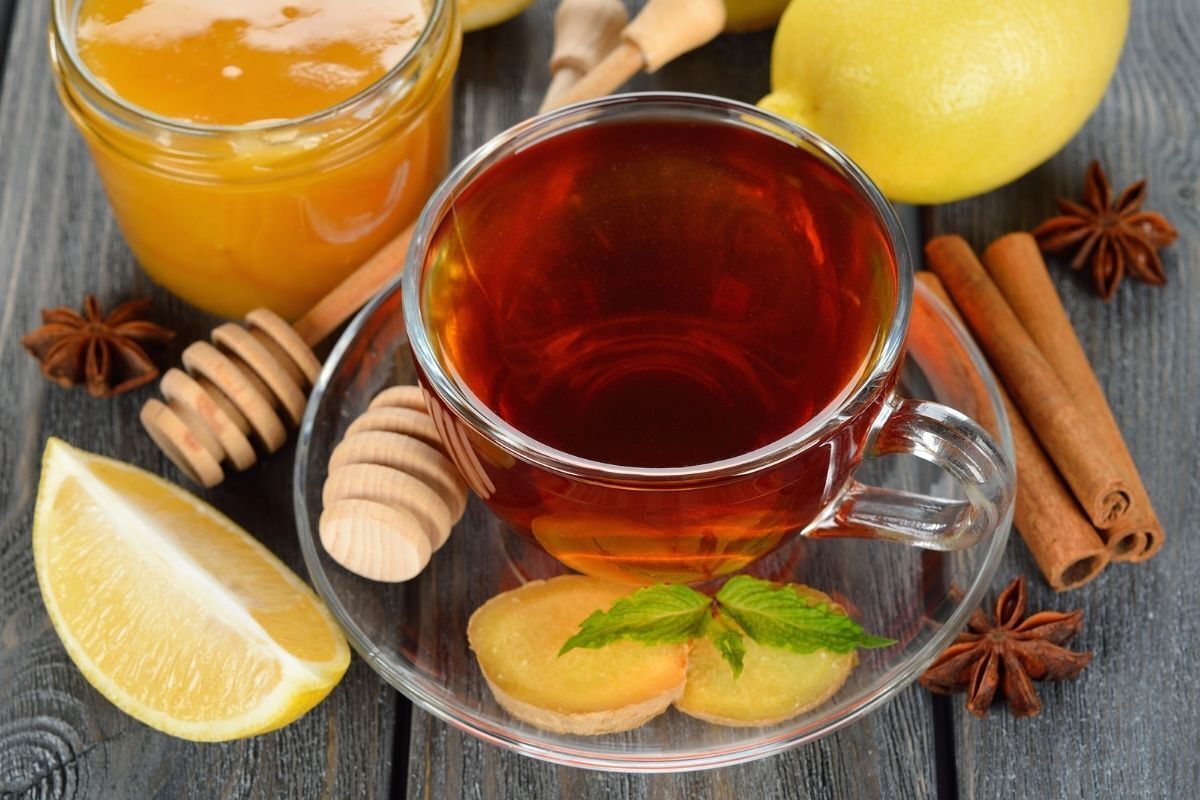
The union of more than one ingredient with diuretic potential is an artifice that aims to speed up the absorption process of the body and contribute to faster results. Ginger and cinnamon have thermogenic actions that, combined with lemon, help improve the functions that contribute to the release of liquids that may be retained in the body.
The infusion of the three ingredients together, besides being tasty and refreshing, helps to strengthen the metabolism, improving the immune system and preventing diseases such as colds and flu. Learn more about the benefits of these ingredients and this tea for your health!
Properties
Ginger, cinnamon and lemon have antioxidant and antibacterial properties. Cinnamon, in particular, is strongly employed to combat bacteria and fungi in the body. In addition, all three have substances that regulate the functions of the kidneys, ensuring a constant improvement in the system of expelling fluids from the body.
Indications
The infusion of ginger, cinnamon and lemon is indicated to relieve intestinal gases and improve abdominal bloating. As it is also an atherogenic drink, it acts by increasing the metabolic process generating the elimination of liquids through perspiration and urine. It is indicated by experts and nutritionists for low-calorie diets and physical performance.
Contraindications
All three elements of this infusion (cinnamon, lemon and ginger), should be consumed sparingly, observing nutritional indications.
Especially for cinnamon, the contraindications are linked to not making use of this spice in conjunction with synthetic medications that, eventually, are being consumed, because there is in cinnamon the presence of assets that can cancel the action of components of other medications. Stay tuned!
Ingredients
Ginger, lemon and cinnamon tea is very aromatic and should be prepared near the time of consumption, especially because it has lemon as an ingredient that, when stored or added to any food, can accelerate the bitter process. To make the tea, you will need 300 ml of water, 10 grams of ginger root, half a lemon expressed and cinnamon stick.
How to do
To make the tea, perform the following steps: place in a cup, the portion of grated ginger then pour the boiling water. Add the cinnamon stick and let act for about 5 minutes. Finally, season with the juice of half a lemon and serve. It should be consumed still warm. If you want to store, make it without the addition of lemon and insert only at the time of consumption.
Diuretic Tea with hibiscus
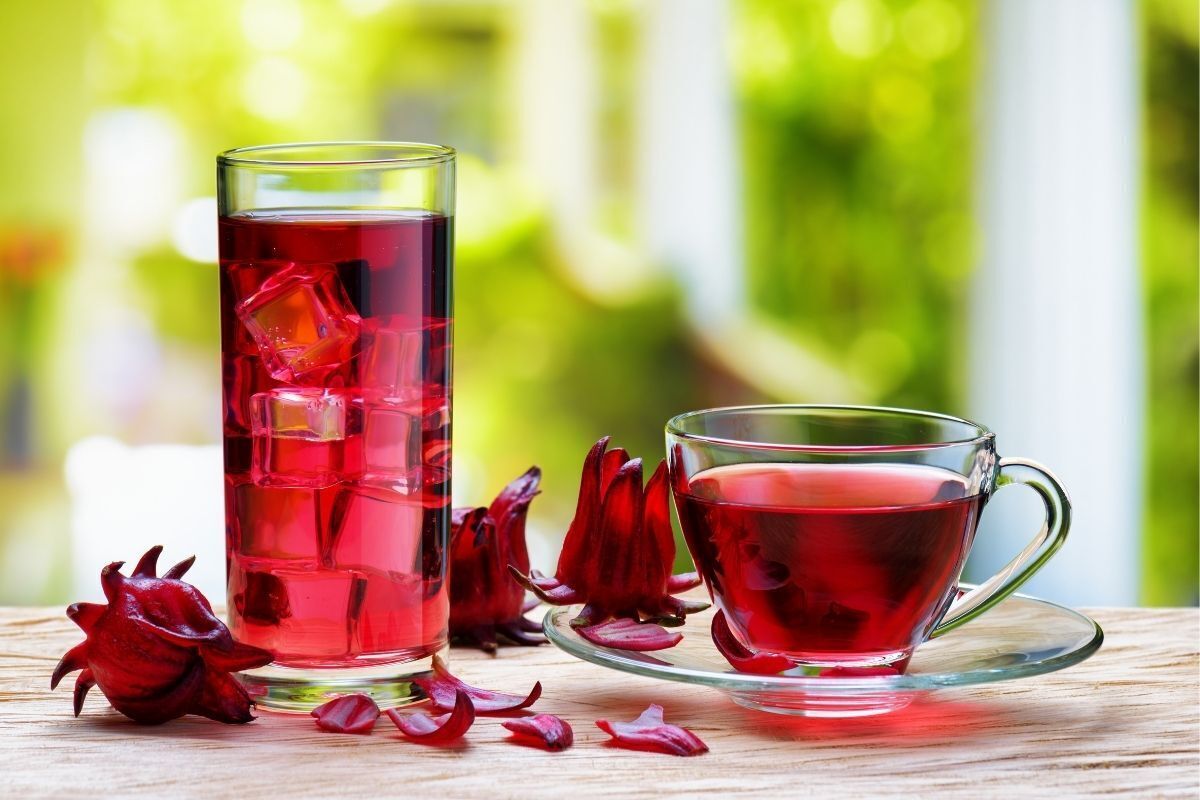
Well known for the use of its flowers in teas, the hibiscus is a plant and has medicinal properties. It has diuretic action when consumed in certain quantity and helps combat stomach discomforts and fluid retention. The flower has a striking color, with reddish tones and ends up transferring this feature to the infusion.
The flower of the hibiscus can also be seen with use in some recipes for various dishes, such as cakes, pies (sweet and savory) and even in jellies. But it is in the tea that the health benefits can be enhanced. Check out all the details about this plant and prepare a delicious hibiscus tea!
Properties
The infusion contains no calories and maintains the thermogenic properties of the plant. Thus, the hibiscus is a source of antioxidant and anti-inflammatory substances helping to unclog the pathways of liquid elimination from the body. In addition, it is a plant that has a high concentration of minerals and vitamins that help relieve tension and the nervous system.
Indications
If consumed under the supervision of doctors and specialists, hibiscus tea is indicated to compose weight loss diets for its diuretic actions. It is also suggested in diets to improve the pressure of the arteries and reduce bad cholesterol in the body. It also produces the cleansing of fat from the liver. For its antioxidant properties it is a source of prevention for the wear and tear of cells.
For the reduction of bad cholesterol levels in the body, hibiscus is also a facilitator. In diseases such as diabetes and in diseases related to overweight, hibiscus is able to offer an increase in good cholesterol, increasing health and propitiating the beginning of deeper treatments with synthetic medication.
Contraindications
For its flavor close to sour, but still sweet, hibiscus tea is easy to consume, however, if used in excess, it can affect the functioning of the intestine causing diarrhea and small poisoning.
By contributing to the production of urine, it can also lead to constant loss of potassium and sodium, so the need to use sparingly. Not recommended for consumption by pregnant women.
Ingredients
Hibiscus tea is made from the dried flowers of the plant, but contrary to popular belief, they are not the flowers commonly seen in gardens. Look for the correct type in stores specializing in herbs and plants for infusion. So, for the preparation you will need 2 tablespoons of dried hibiscus flowers and a liter of preheated water.
How to do
To start the preparation, bring the water to a boil and leave it to boil. When it starts, turn off the heat and add the dried hibiscus flowers over the water. It will be necessary to cover the container so that the infusion occurs. Leave it aside for 10 minutes, after that, strain it, removing the flowers and serve it still warm. It can be stored in the refrigerator for 1 day and consumed cold and/or on ice packs.
Diuretic tea with leather hat
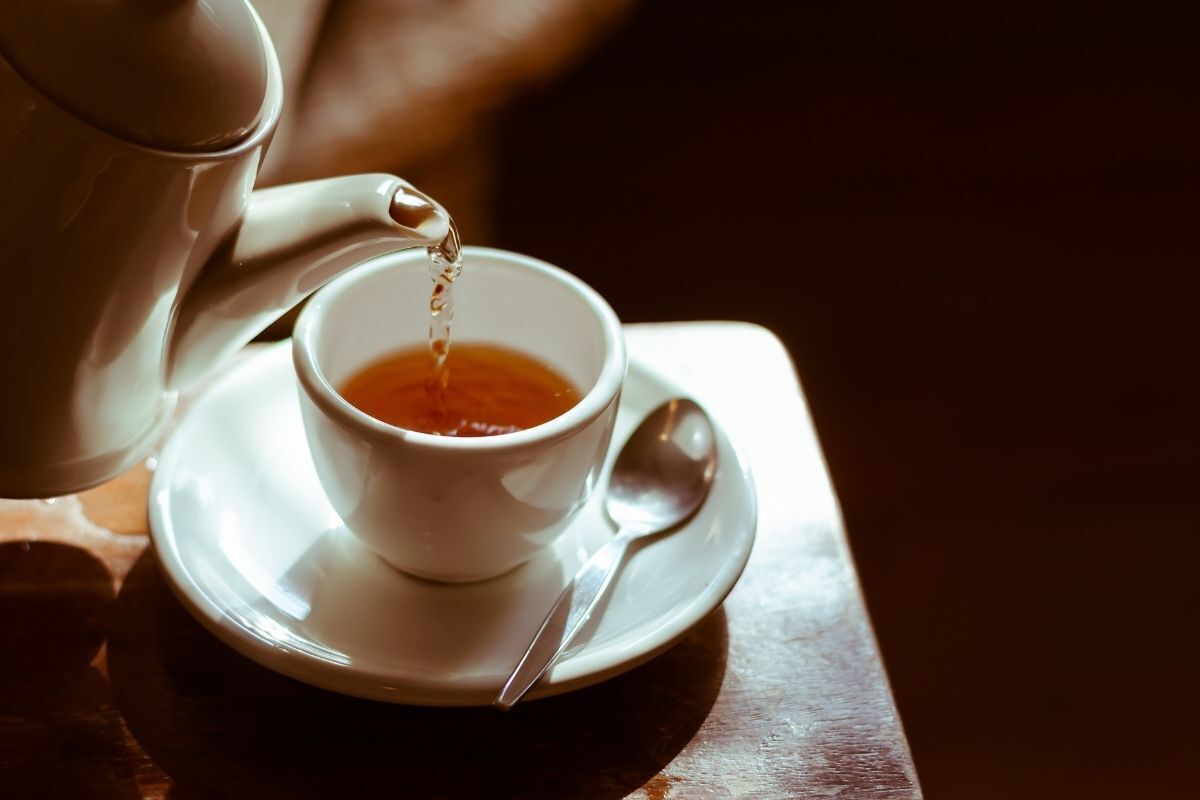
The chapéu-de-couro is a plant that, depending on the region of Brazil, can be found with other names (such as: erva do brejo, chá mineiro, erva do brejo, etc.). Its diuretic action is well known, especially by older people, who already used the plant in medicinal uses. Besides, it is also used for the improvement of diseases, due to its anti-inflammatory actions.
Its tea is prepared from the already dried leaves and is a good option for those who do not like to feel taste in infusions. It has a mild flavor, but, even so, it can receive the addition of sugar or other spices to compose flavored drinks. Learn more about the plant chapéu-de-couro and try the tea!
Properties
The chapéu-de-couro is a recognized herbaceous plant with big leaves. It is used to grow and develop in humid places like the margins of rivers, lakes and even swamps. In Brazil, it is found mainly in the regions of Minas Gerais, São Paulo and Mato Grosso. Other states also have the presence of the plant but in lesser incidence.
It is a plant that has minerals in abundance and carries antioxidant properties contributing to the health of the cells of the body. In addition, it maintains anti-inflammatory, laxative and astringent properties. All these combinations assist in the disinflammation of the lymph systems of the body, allowing the complete elimination of possible retained fluids.
Indications
In its tea version, chapéu-de-couro is indicated for people who suffer from the most diverse inflammations, from skin inflammations (like pimples, etc.) to digestive system related inflammations. Unlike other teas, this one is totally indicated for people who suffer, for example, from gastritis or other chronic stomach diseases.
In addition to oral consumption, boiled horsetail is also used in baths and sinks to help improve and combat inflammations such as syphilis. Also to wash the face and contribute to the drying of pimples and skin alterations.
As a curiosity, in some regions of Brazil, the leaves of leather hat are also used in processes of natural hair and hair coloring, through infusion and maceration of the leaves and the use of alcohol 70 percent. Consult information with specialists, and do not use without specific orientation for this purpose.
Contraindications
For people with cardiovascular insufficiency, the tea of chapéu-de-couro must be avoided. Its ingestion, together with synthetic medicines for the treatment of kidney problems is also not recommended, since it has assets that can inhibit the action of these. The use must be accompanied by a specialist and correctly oriented.
Ingredients
The dried leaves of the plant chapéu-de-leather and water are the only ingredients needed for the production of the infusion. So, have in hand two tablespoons of dried leaves of chapéu-de-leather and half a liter of water for the preparation.
How to do
Start the preparation by bringing the water (1 liter) to boil. As soon as it boils, add the dried leather hat leaves and set it aside. Keep the pot covered for 10 minutes, without opening it. After that, remove the remaining leaf residues and serve it still warm. If you prefer, use your favorite sweetener.
Diuretic Tea with green tea
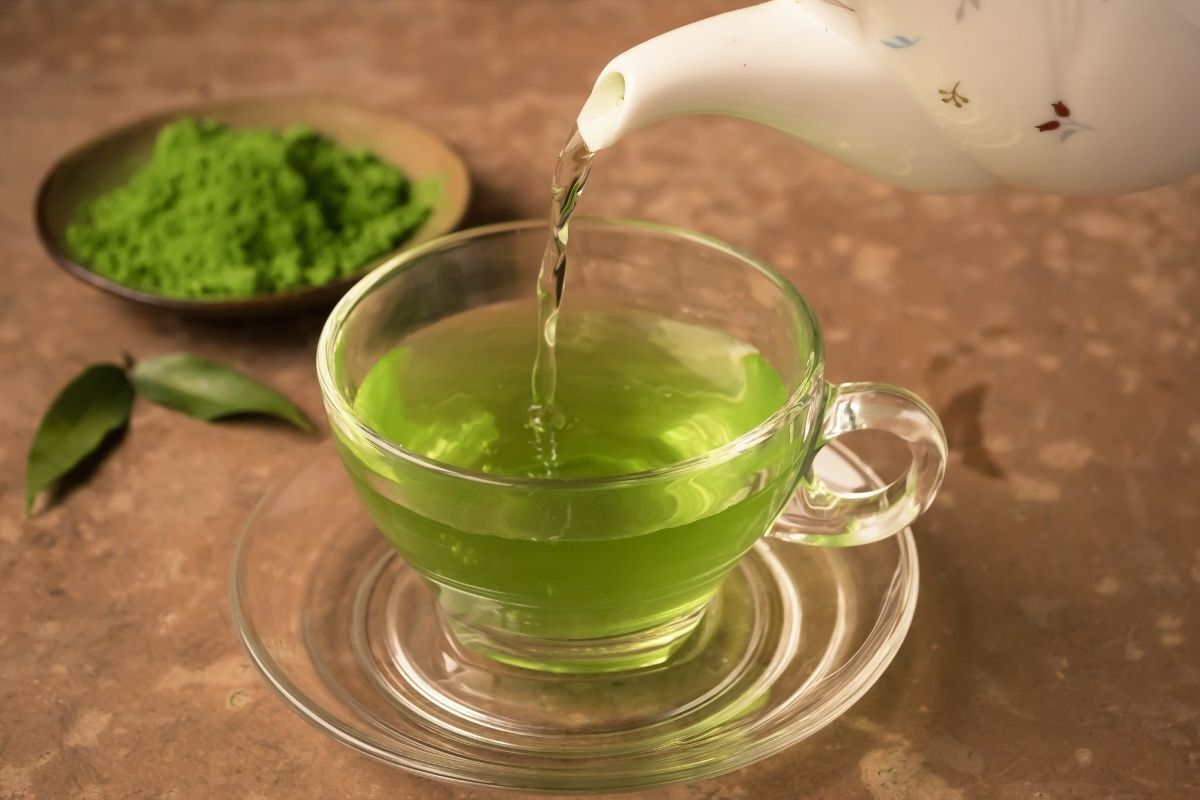
After the hibiscus tea, the green tea is one of the best known and applied in diets to lose weight and reduce measures. This happens because it is a source tea for the diuretic actions of the body. It can also be combined with fruits, of equal diuretic value and that enhance its performance.
Originating from China and regions of India, green tea is made from leaves of a plant called Camellia. It is a versatile tea that can be consumed hot, cold, in its liquid form or in capsules. The flexibility of consumption is also a differential. Learn more about this infusion and make a delicious green tea today.
Properties
The infusions with green tea have, as a singularity, the presence of caffeine. In addition to stimulating the metabolism contributing to calorie burning, it causes reactions of stimulation assisting in activities of attention and concentration. Green tea also adds to the body antioxidant properties, vitamins (B, E and C), minerals (calcium, magnesium, zinc, iron and potassium, among others).
Indications
In addition to its indication for weight control diets, for its diuretic actions, if combined with fruits (example: pineapple) with equal value, green tea helps in the treatment of diseases such as diabetes. It is also indicated, in its hot or warm version, to improve digestion sensation.
From its antioxidant properties, it is also used in order to mitigate the premature aging of the body's cells. This is promoted because green tea fights the so-called free radicals, contributing to the prevention of sagging, one of the main visual factors of aging.
Contraindications
The main contraindication for the consumption of green tea is linked to the presence of caffeine. It is important to know that its use is not recommended for anyone at night, since it has stimulant properties and can cause insomnia and or agitation that interfere with sleep.
In addition, it should be avoided by people with kidney disorders or even constant gastric diseases. Finally, it is an infusion not recommended for pregnant women.
Ingredients
Depending on how the tea is prepared, it can have a characteristic bitterness, so the recipe suggestion indicates the combination with a fruit: pineapple. To make the tea, you will need: half a liter of water, 2 large slices of pineapple and 1 and a half tablespoons of green tea. In this case, look for the dried leaves or the powdered version of the tea.
How to do
Bring half a litre of water to the boil in a pan and once boiling, add the two large slices of pineapple and bring to the boil again.
Then, add the tea powder or the dried tea leaves (already sanitized). Turn off the heat and cover the pot. It will be necessary to wait for 10 minutes. Remove the rest of the leaves and pineapple, strain and serve. This tea is also great in its iced version, enjoy with ice cubes.
Diuretic Tea with fennel
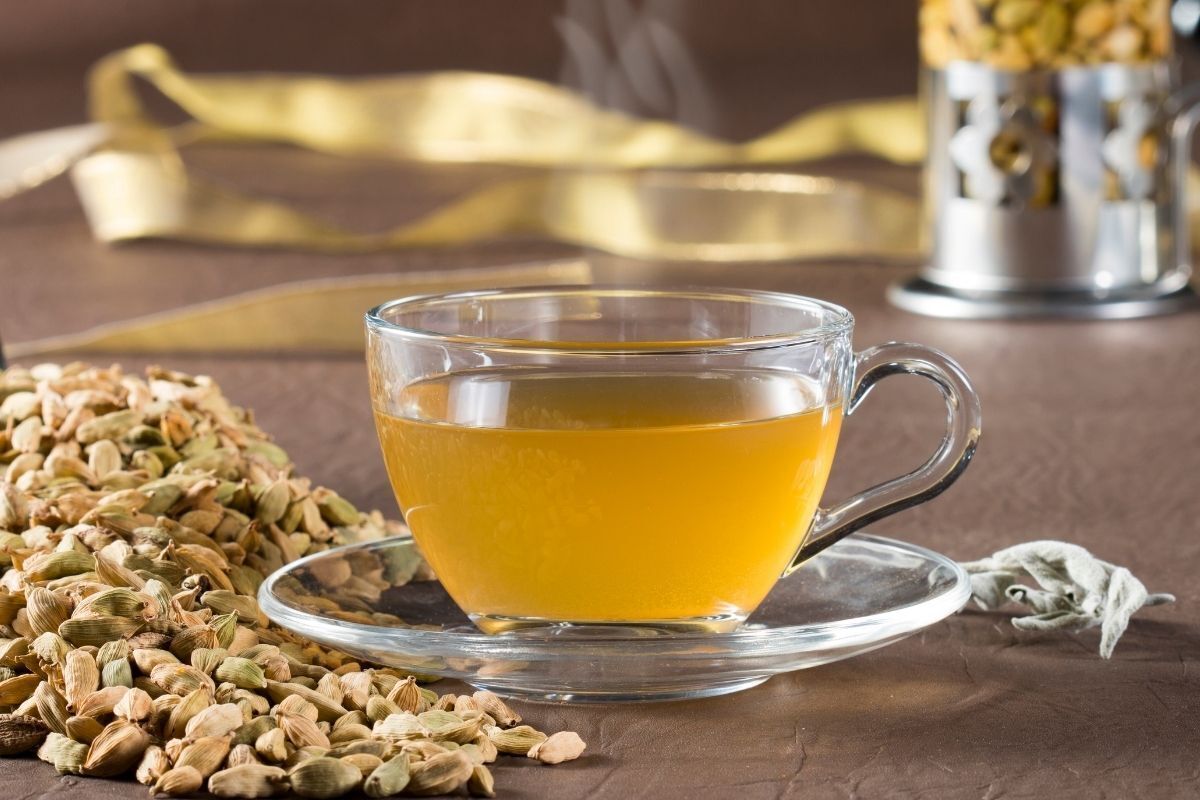
Often confused with fennel by its shape and appearance, fennel is a plant that also has diuretic properties and aromatic conditions that allow the creation of drinks and infusions that benefit the health of the body. In the mouth, it has a taste close to anise, making its taste well accepted by both adults and children.
Besides its application in teas, fennel is used by the pharmacy for the production of assets used in aesthetics and beauty, especially those with relaxing action, such as creams for the body, feet and hands. Understand more about fennel and how to use it in your tea!
Properties
In its composition, fennel has nutrients, vitamins and fibers that make up its food framework. In addition, the presence of minerals is rich: potassium, calcium, iron, phosphorus, sodium and zinc. Widely used for expectorant actions, fennel has properties that help both internal relaxation (throat, lungs and airways) and external (skin, tissues and muscles).
Indications
People with diseases related to bladder function and with predisposition to high blood pressure can make use of fennel tea, because its diuretic action helps increase urine production and conditions the need for elimination of fluids from the body. It is also indicated for the treatment of gas and other discomforts arising from the digestive system.
Applied to food in other formats, as a seasoning or added to recipes for cakes and pies, fennel helps fight constipation and diarrhea. It also promotes the reduction of anxiety and stress and, as a consequence, helps in the improvement of constant sleep.
Contraindications
Fennel tea is contraindicated for epileptics and also for people with allergies or sensitivity to plants and spices. Consumption should be evaluated by experts for inclusion in diet in moderation, especially for children. Consumption by pregnant women is not recommended, since it alters the functions of the uterus.
Ingredients
In this suggestion, the infusion with fennel is made from the seeds of the plant, which can be found in homes or stores specializing in herbs and spices. You will need a teaspoon of fennel seeds and also a large cup of boiling water.
How to do
The tea is prepared by immersing the seeds in boiling water, so first add the seeds to the cup and then fill it with hot water. Use a saucer to cover the cup and keep it closed for 10 minutes, then remove the seeds and drink it. If you make a larger quantity, remember that the tea lasts up to 3 days if stored in the refrigerator.
Diuretic Tea with cinnamon
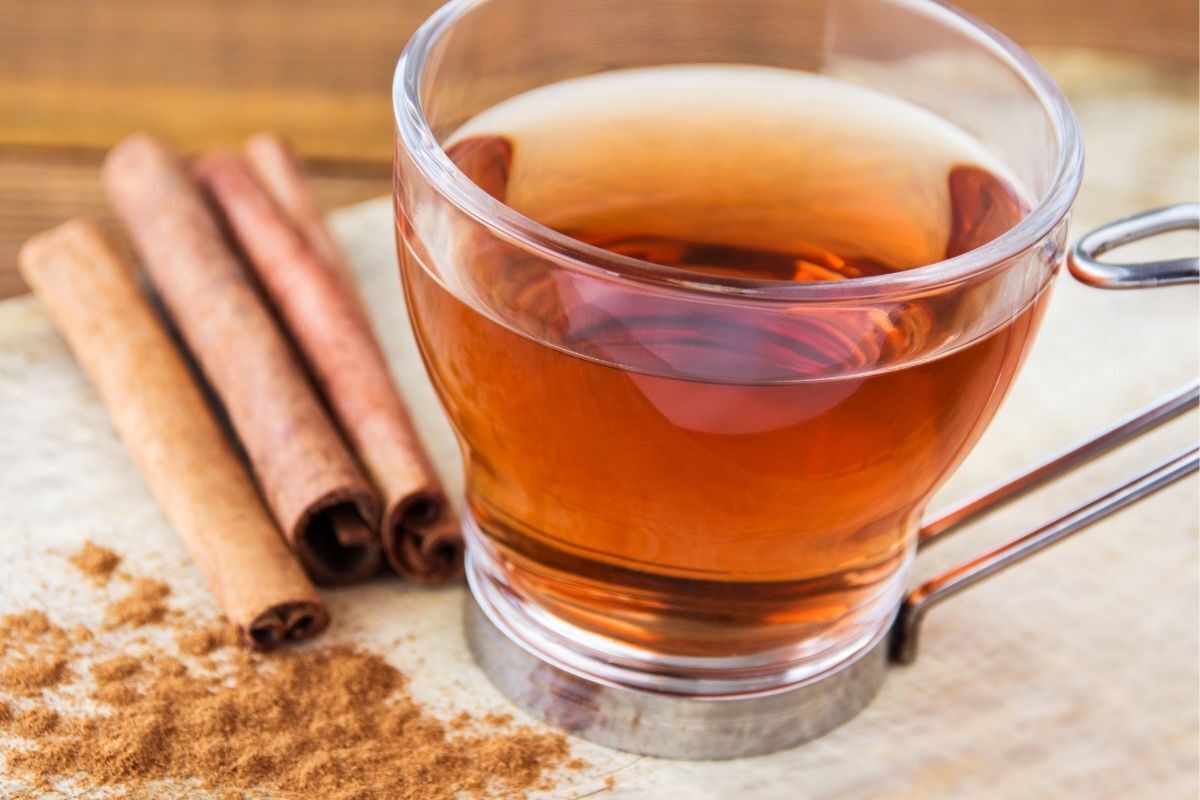
It is not common to use cinnamon alone in teas. Usually, it is added to compose or flavor a hot drink that contains other elements. But know that cinnamon itself is a diuretic active and that, if consumed in the form and tea, can help burn calories and accelerate the body's functionality, as well as the elimination of fluids.
It has a strong and striking aroma. It can be consumed at any time, but it is a good choice to consume it in the morning, before exercising, since cinnamon gives the body energy and strength. Learn more about this application of the use of cinnamon and make an invigorating tea right now!
Properties
Because of substances present in its design, cinnamon has anti-inflammatory and antioxidant properties that help maintain the youth of cells. It is also a spice that contains flavonoids, which help fight malignant cells that can favor the appearance of diseases such as cancer and diabetes.
The cinnamaldehyde compound, present in cinnamon, is responsible for speeding up the body and improving mental conditions (attention and concentration). If combined with other drinks with the presence of caffeine, cinnamon has its capacity potentiated for calorie burning.
Indications
It is totally indicated for people who are on diets to reduce weight and measures, because it offers energy and willingness to perform high performance exercises and intense workouts, which aids in fat loss. Its thermogenic effect also helps to improve diseases that, from the sweating process, become milder as the flu and colds.
The ingestion of cinnamon in the form of tea, or even to season milk-based drinks (such as vitamins and yogurts) helps to combat bad breath (caused by gastritis) and to prevent oral diseases such as caries, gingivitis and other inflammations in this region of the body.
Contraindications
The main recommendation is that cinnamon should not be administered together with the consumption of medicines, since its properties can interfere with the action of assets and reduce their capacity. Also, due to its thermogenic action, it should not be consumed by pregnant women and mothers in the process of breastfeeding.
Ingredients
Combine cinnamon with some other ingredients to make it easier to drink and flavor the drink. For this cinnamon tea suggestion, you will need: 250 ml of water, a small piece of ginger, half a cinnamon stick and three thick slices of lemon with the peel.
How to do
To make the tea, you will need to boil the water in a pot for a few minutes. Next, add the small pieces of ginger and the cinnamon stick. Wait for it to boil again. Then, remove all residues by straining the liquid. Let the infusion rest for a few more minutes and then add the lemon. Consume immediately to avoid bitterness.
Diuretic Tea with Boldo
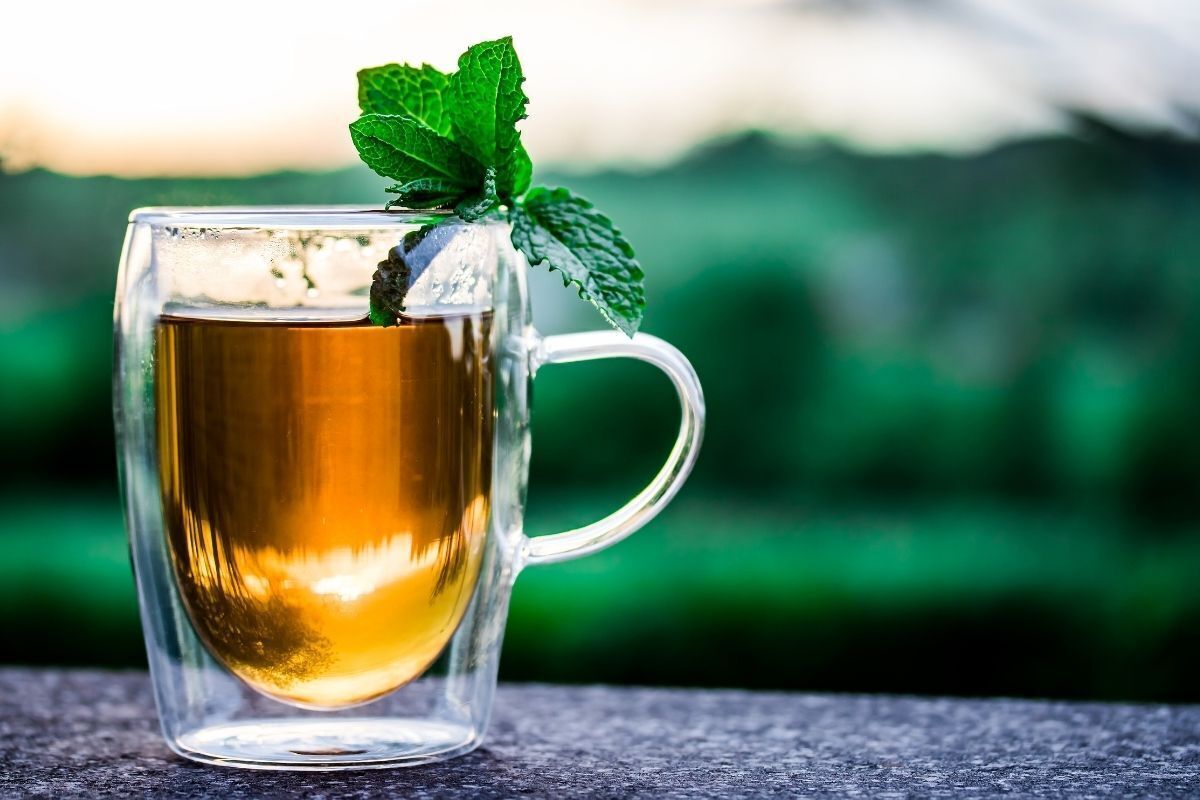
Despite being an aromatic plant, boldo is best remembered for its bitterness and sharp taste, usually used for stomach and liver related ailments. But boldo tea also has diuretic properties and can be used to assist in driving the elimination of toxins and retained fluids from the body.
Its power to clean toxins from the body is great and ensures the effectiveness of its use. Therefore, it is worth knowing the benefits of this plant to include it in the diet correctly. Understand more about this plant, its indications and contraindications reading below. Also learn a more seasoned version of the recipe for consumption.
Properties
The best known version of the boldo plant in Brazil is the green leaves with velvety characteristics. This version has stimulant properties of the digestive system, besides being an analgesic.
This ability also aids in eliminating heartburn because it contains a substance called forscolin, which helps improve the functionality of the liver. Finally, it has the presence of caffeine, which aids in the mood and motivation of the body.
Indications
Experts and nutritionists recommend the mild use of boldo tea to help in weight loss diets. It is also commonly recommended to assist in treatments of gallbladder ailments. For the improvement of digestion, boldo tea can be administered right after meals. As a consequence, it also treats benefits for bowel function.
After excessive consumption of alcoholic beverages, to reduce the feeling of hangover and nausea, the infusion of Boldo is indicated to mitigate and can also be combined with the consumption of some fruits that help to return the normal conditions to the body. After drinking the tea, try to feed yourself with: watermelon, kiwi or pineapple.
Contraindications
Just like any other strong active infusion, boldo tea should be consumed sparingly to avoid liver poisoning or nausea and adverse reactions.
In addition, it should be noted the possibility of generating allergies in people extremely sensitive to the consumption of plants or herbs that have caffeine in its composition. Because it acts directly on the stomach functions, this tea is not recommended for pregnant women.
Ingredients
For boldo tea, the ideal is to collect the leaves of the plant beforehand and let them dry naturally. Once dried, to prepare the tea, you will need 1 liter of boiling water for every 50 grams of leaves. It is not recommended to sweeten, but, if you want, you can add lemon drops to flavor and reduce the bitterness.
How to do
To prepare the tea, remember to previously dry the harvested boldo leaves naturally. Place them in a pot with a lid and pour boiling water over them, then close the lid. The infusion should be kept resting covered for about five minutes.
After it has warmed, pour into a cup, and add lemon drops to the drink. The consumption of tea should happen within two days to maintain the properties.
How often can I take the diuretic tea?
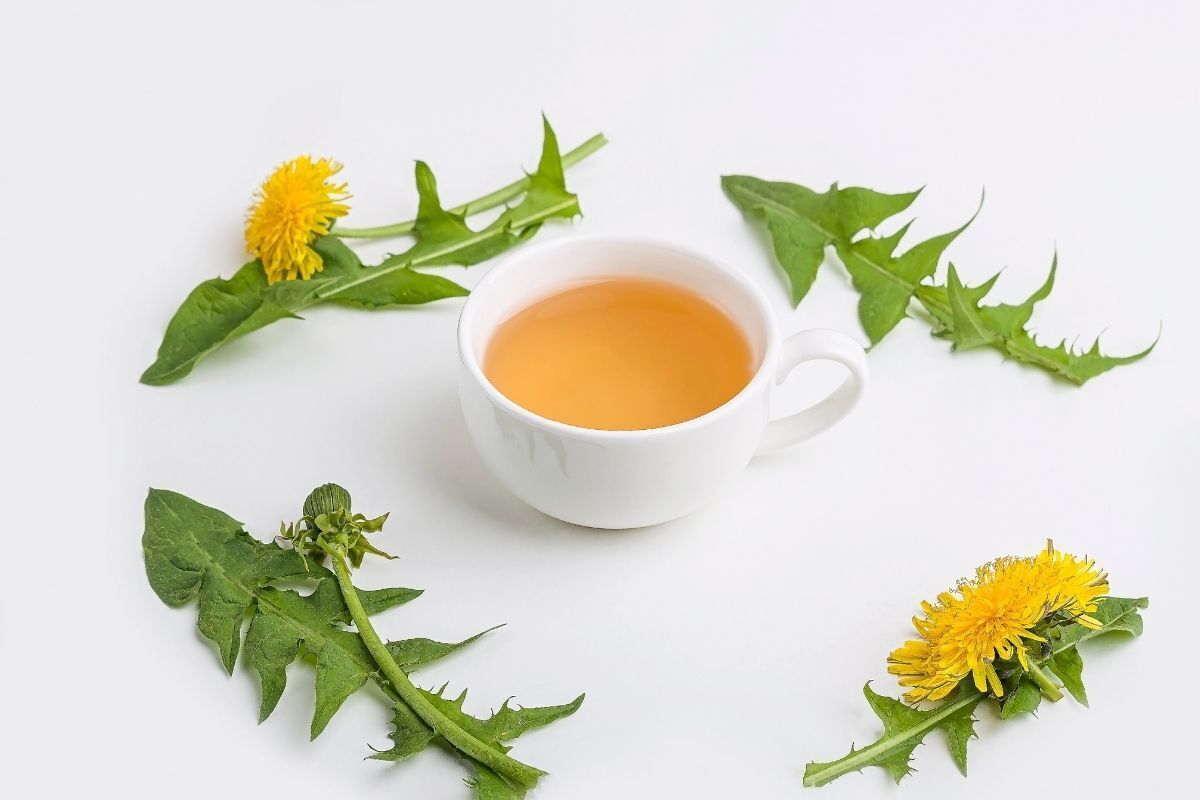
Although they are drinks that bring comfort to various uncomfortable situations of the body and help in the recovery of energy and vitamins needed for everyday life, the consumption of diuretic teas should be observed with great attention. The repeated use of the same type of tea, according to the elements that compose it, can cause dysfunction and changes in the body and body health.
Therefore, always choose to try new versions and learn about new herbs, fruits and spices that can be transformed into infusions and bring the benefits you desire. In addition to knowing all the capabilities of the chosen tea, you should also seek guidance from experts and nutritionists on the application of tea in your diet and nutrition.
Remember that medicinal plants have different action from organism to organism, and that is why it is important that you know your own needs, as for vitamins and nutrients, to choose the right infusion.
Nature provides several options. Then, it is up to you, through the search for information and guidance, choose what you like best in taste and aroma, but also regarding the application and function. So, know more and more and make good choices of diuretic teas for your body!

